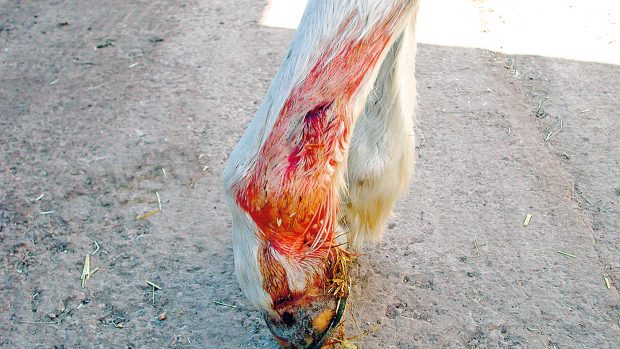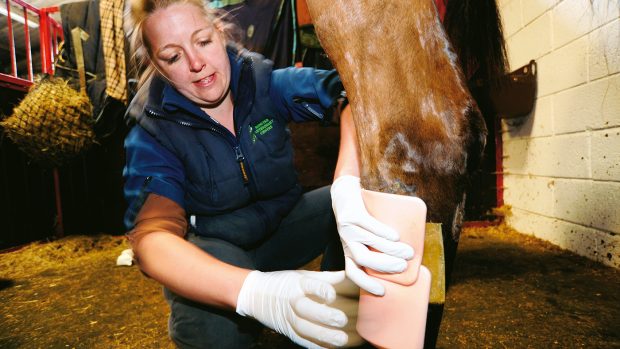Horses are complicated creatures. Unfortunately, just like complex machines, this makes them prone to breaking down. Making the correct decision about a problem quickly can be vital to the horse’s health and wellbeing.
Colic
Most colics are mild, little more than temporary spasms of pain. However, no colic should be ignored, because there may be something more sinister is going on. If your horse shows signs of discomfort for more than half an hour then you should call the vet.
Should you walk a horse with colic while waiting for the vet to arrive? The best advice is that if the horse is rolling about and in danger of getting injured or cast, then it should be walked. If it wants to stand quietly, however, then leave it alone.
Azoturia
This condition is also known as tying up. It usually happens to fit horses out on exercise. The muscles of the hindquarters and back legs feel tight and hard to the touch and horse becomes reluctant to move. It is a very painful condition and horses often sweat up.
If you are at home, keep the horse quiet in its stable until the vet arrives. If you are out on a long ride, then the horse must be boxed home. Don’t try and force it to walk as this could damage the muscles further. Painkillers and steroids are the usual treatment, with blood tests to assess the degree of muscle damage.
Laminitis
Laminitis typically affects small fat ponies out at grass. The pony is extremely reluctant to move and stands on its heels to relieve the pressure at the front of the feet.
First aid consists of getting them off the grass and into a thickly bedded box. Laminitis can also occur after horses have broken into the feed bin and gorged themselves on grain.This can trigger a life-threatening laminitic attack, and prompt veterinary help is essential.
Foot abscess
This is the single most common foot problem that horse owners experience. Any very lame horse that has no signs of injury, but has a bounding pulse at the fetlock is almost sure to have a foot abscess.
If you suspect an abscess call the vet to dig it out before you poultice, otherwise it will spread upwards and eventually burst out at the coronary band.
At its simplest, a poultice consists of half an Animalintex and a Vetwrap, but for a more hardwearing solution a concoction of plastic bags and tape can be used. Poultice boots are useful if the horse has to stay out.
Cast horse
Horses get castwhen they roll right over too near the stable wall. They become wedged, with not enough leg room to get up and insufficient space to push themselves back over.
The best way to ‘uncast’ a horse is to pass a long rope or lunge line around the upper hind leg. Loop it round above the hock leaving two free ends. Then do the same with the upper front leg, looping the rope above the knee. Several people pulling together on the ropes will provide enough leverage to turn even the biggest horse.
Don’t tie the ropes onto the legs, and be sure to leave yourself enough room to get out of the way. Be aware that horses often struggle and kick out so do be careful. Once the horse is up, inspect it for cuts and scrapes and check there is nothing in its eyes. Remember that a horse rolling enough to get cast may have colic.



